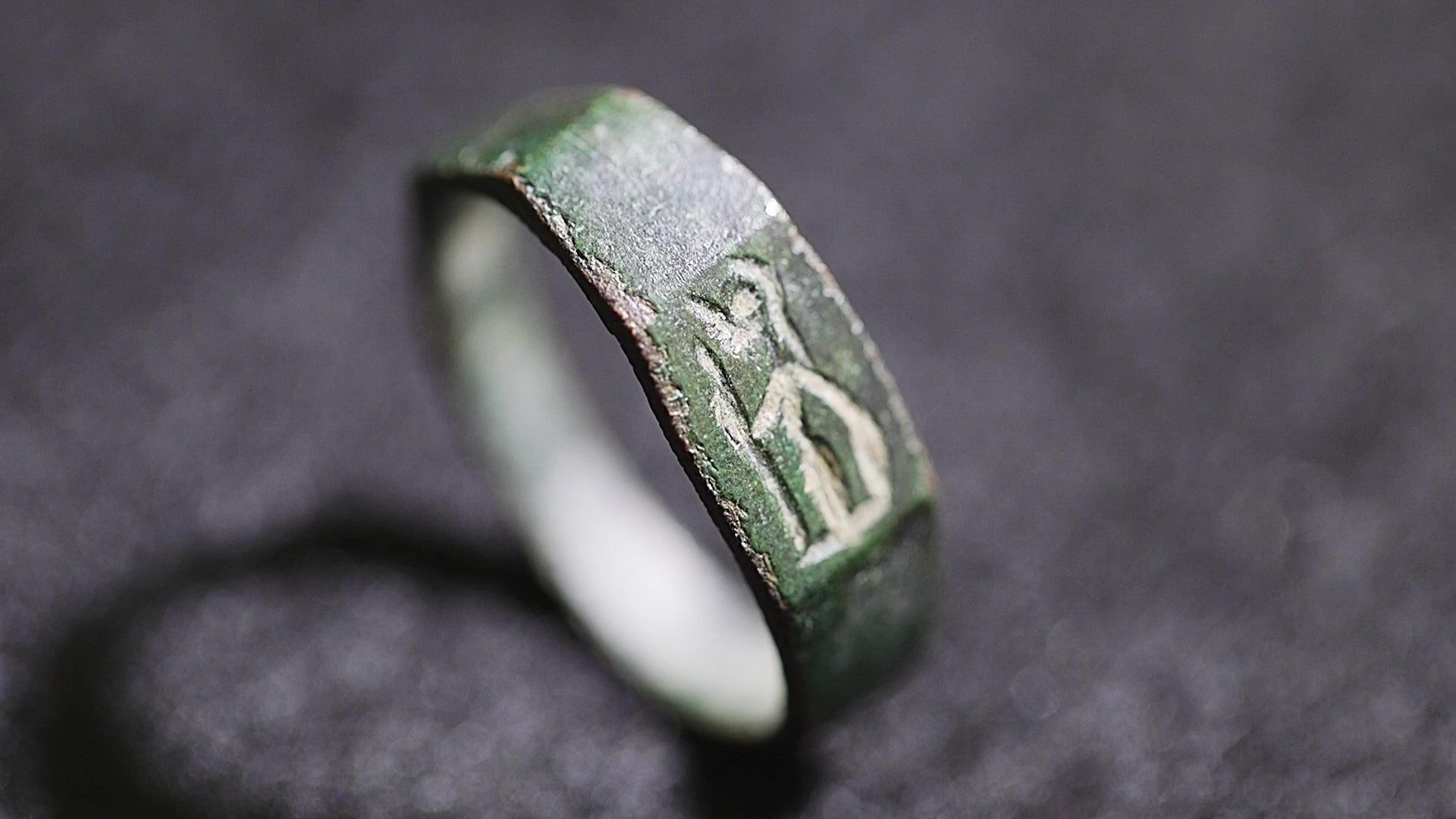Rare Roman ring with mysterious engraving discovered by 13-year-old on hike
Boy found a small figure, possibly of a warrior, engraved on the ring
A strange artefact unearthed by a thirteen-year-old while on a trek in Haifa, north of Israel, has turned out to be a rare ancient Roman ring featuring goddess Minerva.
The bronze ring has been dated to be from the 2nd or 3rd century AD, when the Israeli region was part of the Province of Syria Palaestina under the Roman Empire.
"During the walk, I noticed a small green object and picked it up. It had corrosion on it, so at first I thought it was a screw nut. I thought about melting it down, but fortunately, I realised it was a ring,” the teenager Yair Whitson said in a statement.
He found a small figure, possibly of a warrior, engraved on the ring.
“At home, I recognised that it had a figure on it. At first glance, I thought it was a warrior,” the 13-year-old said.
Mr Whitson and his family then contacted the Israel Antiquities Authority (IAA) who further analysed the ring with the help of experts.
The ring depicted a naked figure wearing a helmet and holding a spear and a shield.
“In one hand she holds a shield, and in the other a spear," IAA’s Nir Distelfeld said.
“Yair's identification of the figure as a warrior is very close to reality. The figure is apparently the goddess Minerva from Roman mythology, who is also known as Athena in Greek mythology,” he said.

Minerva was popular during the time in the region as the Roman goddess of wisdom, war, and military strategy, researchers say.
In comparison to gods like Mars, who represented winning wars by violence, Minerva’s focus was strategic warfare.
Recent research suggests Minerva was not only worshipped in a civic fashion, but also at a personal level by individuals.
While it remains unknown who owned the ancient ring, archaeologists suspect it may have belonged to someone who lived in or near what’s now the Khirbet Shalala archaeological site.
The site is located on a hill at the centre of Mount Carmel, and is home to a Roman-era mansion near an ancient rock quarry.
Researchers suspect the ring likely belonged to someone who lived at the mansion.
“Another possibility is that it belonged to a worker in the quarry, or perhaps it was used as a burial offering in nearby tombs. The possibilities are many,” they say.
“Yair's admirable act, who immediately reported the discovery and handed the ring over to the State Treasures, demonstrates responsibility and respect for our past,” IAA director Eli Escozido said.
Join our commenting forum
Join thought-provoking conversations, follow other Independent readers and see their replies
Comments